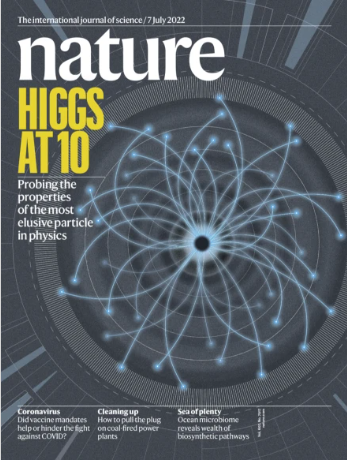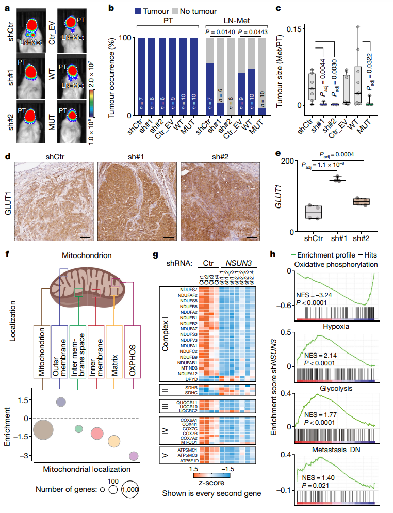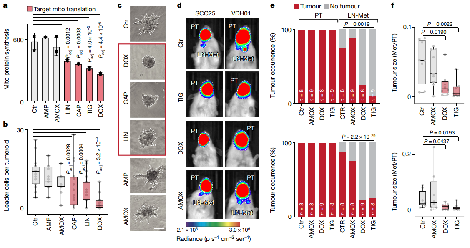

Delaunay S, Nature. 2022 Jun 29.Aggressive and metastatic cancers show enhanced metabolic plasticity1, but the precise underlying mechanisms of this remain unclear. Here we show how two NOP2/Sun RNA methyltransferase 3(NSUN3)-dependent RNA modifcations—5-methylcytosine (m5C) and its derivative 5-formylcytosine (f5C) (refs.2–4)—drive the translation of mitochondrial mRNA to power metastasis. Translation of mitochondrially encoded subunits of the oxidative phosphorylation complex depends on the formation of m5C at position 34 in mitochondrial tRNAMet. m5C-defcient human oral cancer cells exhibit increased levels of glycolysis and changes in their mitochondrial function that do not afect cell viability or primary tumour growth in vivo; however, metabolic plasticity is severely impaired as mitochondrial m5C-defcient tumours do not metastasize efciently. We discovered that CD36-dependent non-dividing, metastasis-initiating tumour cells require mitochondrial m5C to activate invasion and dissemination. Moreover, a mitochondria-driven gene signature in patients with head and neck cancer is predictive for metastasis and disease progression. Finally, we confrm that this metabolic switch that allows the metastasis of tumour cells can be pharmacologically targeted through the inhibition of mitochondrial mRNA translation in vivo. Together, our results reveal that site-specifc mitochondrial RNA modifcations could be therapeutic targets to combat metastasis.
01 研究背景
在侵袭性肿瘤中,癌细胞不断向周围组织侵袭,并试图在其他组织和器官中形成新的肿瘤。在这个过程中,癌细胞必须在氧气不足或营养不足等不利条件下生存。为了克服这些压力因素,癌细胞会相应地调整它们的能量产生方式。然而,到目前为止,人们对癌细胞的这种灵活调整能量产生方式的分子机制知之甚少。
02 研究结果
呼吸链成分的产生受到线粒体中特定机制的严格调控,而这对癌细胞的转移扩散有影响。在 mRNA 翻译合成蛋白质的过程中,tRNA 负责将对应的氨基酸转运至核糖体上合成多肽链。研究团队发现,在转移过程中,tRNA 修饰通过支持蛋白质的生产来调控转移,也就是是,tRNA 修饰是这种癌症转移调控机制的一部分。
线粒体 tRNA 的一种特定的甲基化修饰——m5C(5甲基胞嘧啶),是癌细胞的侵袭和转移过程中所必需的。m5C 修饰加速了线粒体中的蛋白质合成,增强了呼吸链成分的产生。从而帮助癌细胞产生更多的能力供给侵袭和转移过程中的消耗。
缺乏线粒体 tRNA 的 m5C 修饰的癌细胞,通过糖酵解的方式低效产生能量,转移能力有效。而原发性肿瘤中的癌细胞的活力和生长不受 m5C 修饰的影响,这进一步证实了线粒体 tRNA 的 m5C 修饰是作用于癌细胞的侵袭和转移。
甲基转移酶 NSUN3,负责 m5C RNA 修饰,研究团队发现,使用 RNAi(shRNA)抑制 NSUN3 酶表达时,线粒体 tRNA 的 m5C 修饰显著降低,且癌细胞的侵袭和转移减少。
癌细胞的转移需要线粒体 tRNA 的 m5C 修饰

NSUN3 酶的高表达和 m5C 修饰的升高,可以预测头颈癌患者的淋巴结转移和更严重的疾病进展。这提示了我们,NSUN3 酶具有作为转移性癌症的生物标志物的潜力。
有些抗生素(例如氯霉素、强力霉素)能够特异性抑制线粒体蛋白的产生,而不影响细胞质中的蛋白质。研究团队发现,使用氯霉素或强力霉素治疗,可以减少癌细胞的侵袭和转移,还减少了小鼠模型中淋巴结转移的数量。
使用抗生素抑制线粒体蛋白质合成,可抑制细胞转移

03 讨论与结论
甲基转移酶 NSUN3介导的线粒体 tRNA 的 m5C 修饰,能够通过促进线粒体呼吸链的蛋白质合成来增强能量供应,从而促进癌细胞的侵袭和扩散转移。当阻断 NSUN3 酶,或使用抗生素抑制线粒体蛋白质合成,癌细胞的侵袭和转移能力显著下降。
版权声明:本网站所有注明来源“医微客”的文字、图片和音视频资料,版权均属于医微客所有,非经授权,任何媒体、网站或个人不得转载,授权转载时须注明来源:”医微客”。本网所有转载文章系出于传递更多信息之目的,且明确注明来源和作者,转载仅作观点分享,版权归原作者所有。不希望被转载的媒体或个人可与我们联系,我们将立即进行删除处理。 本站拥有对此声明的最终解释权。









发表评论
注册或登后即可发表评论
登录注册
全部评论(0)